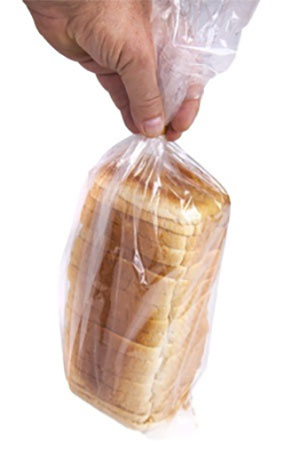 Reduce, reuse, recycle have become a familiar mantra among consumers wishing to reduce their personal carbon footprint and help improve the overall health of the planet. In light of this trend, companies— especially those within the food and beverage industry— have made a concerted effort to meet the public's demands for innovative food packaging.
Reduce, reuse, recycle have become a familiar mantra among consumers wishing to reduce their personal carbon footprint and help improve the overall health of the planet. In light of this trend, companies— especially those within the food and beverage industry— have made a concerted effort to meet the public's demands for innovative food packaging.
Consumers want packaging that not only increases the recyclability of the products, but that reduces fear regarding the use of chemicals in those same packaging products.
Role of Food and Beverage Packaging
The food and beverage packaging industry "comprise 55 percent of the $550 billion value of packaging in the global marketplace," states Dr. Donald Rosato, President of PlastiSource, Inc.
Unlike the relative simple needs of most generic consumer packaging, food-grade packaging must:
- Reduce food loss
- Increase shelf life
- Be cost effective
- Maintain food safety
- Minimize environmental impact
- Increase product visibility
About fifteen percent of all variable costs for both food processing and the packaging industries is spent on packaging materials.
According to Dr. Rosato, specific trends have emerged in recent years to enhance and influence innovation in both beverage and food packaging. These trends, considered global, include but are not limited to:
- Food processing at the industrial level
- Reduced consumption of animal protein by a larger demographic
- Consumer demand for quick/easy food prep
Innovative Food Packaging and Global Trends
In the last 20 years, all industries have seen global transformation with the advent of the internet and the technological advancements in communications. It has become easier for consumers to access important information regarding food sources, ingredients, farming/production practices and the impact of packaging materials. Recently, the health effects of certain packaging materials have become a particular concern.
On July 10, 2014, Food Safety News reported on a new study by the Food Packaging Forum. This study found that “175 chemicals with known hazardous properties are legally used in the production of food contact packaging in Europe and the U.S.”
It has been known that food packaging materials such as certain plastics, foil, aluminum cans and other containers can leach synthetic substances into food, which is then consumed by the public. While the release of these substances into consumable foods generally is considered low-level, many of the substances found by the study were reported as “carcinogenic, mutagenic or reprotoxic,” states Food Safety News.
Modern consumers armed with information and concerned about food safety will make their product selection not based solely on packaging presentation or even price point, but with consideration to how the product was packaged and the type of materials used. Savvy consumers do not want potentially harmful substances leaching into their foods, especially when they already are paying higher prices for certified organic-grown consumables.
Recycling Initiatives Can Effect Food Packaging
Globally, demand for sustainable materials in products continues to grow. Food and beverage packaging must keep up with demands for sustainable, eco-friendly packaging. Countries pushing to eliminate plastics entirely from landfill space will have a direct impact on the food packaging industry.
Europe has been the world’s leader in plastics recycling, utilizing a waste-to-energy program instead of sending plastics into landfills while, in the US, landfills are still the ultimate destination for most recyclables. Jim Glauser, specialty chemicals analyst at IHS Chemical states, “Approximately 75 to 80% of its [U.S.] plastic waste goes into landfills… Western Europe uses a combination of both, including making the consumer pay for rubbish as an incentive to recycle.”
With such consumer and government-driven initiatives gathering steam, providing sustainable, easy to recycle packaging manufactured responsibly and with non-toxic materials must be a focus for today's food and beverage industry. As global trends continue to develop regarding sustainability and recycling, innovative food packaging must also develop to meet the demands.







